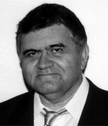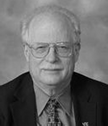This special issue reflects the expansion of research, development and use of RF/microwave in medicine, and the resulting interest of the engineering community.
RF/microwave systems are presently found in major hospitals, and many conferences are thus dedicated to their utilization in medicine. One such conference is the upcoming 2018 International Microwave Symposium (IMS) in Philadelphia, USA, during which both the plenary and the closing sessions will be addressed by distinguished physicians.
Six papers have been accepted for this issue, identifying innovation in (1) the traditional uses of radio frequency (RF)/microwave. These include papers on the subjects of implantable antenna design, radar for health monitoring, an artificial neural network-based radar approach for the detection of breast cancer, and a minimally invasive device for the achievement of hemostasis; and (2) the less traditional uses of RF/microwave at higher frequencies. These include a paper on the subject of microwave heater for digital microfluidics, and another that deals with the concept of microliter sensing of human blood samples.
 Asher Madjar (IEEE Life Fellow) received his D.Sc. Degree from Washington University in St. Louis in 1979 and the B.Sc. and M.Sc. Degrees from the Technion – Israel Institute of Technology – in 1967 and 1969, respectively. Dr. Madjar's expertise is in the area of microwave and microwave photonics components, integrated circuits and subsystems. He has been working for more than 45 years in this field in industry and in parallel teaching in academia both in Israel and the USA. He performed research in many aspects of this field and has published over 150 papers in the professional magazines and in conferences. In industry, he established several keys know how centers (MIC laboratory, MMIC design group) and trained generations of microwave engineers in Israel. His current interest is in advanced technologies for microwave and microwave photonics hardware: monolithic integration, THz devices, wide bandgap devices, optical/microwave interaction, advanced design techniques, etc.
Asher Madjar (IEEE Life Fellow) received his D.Sc. Degree from Washington University in St. Louis in 1979 and the B.Sc. and M.Sc. Degrees from the Technion – Israel Institute of Technology – in 1967 and 1969, respectively. Dr. Madjar's expertise is in the area of microwave and microwave photonics components, integrated circuits and subsystems. He has been working for more than 45 years in this field in industry and in parallel teaching in academia both in Israel and the USA. He performed research in many aspects of this field and has published over 150 papers in the professional magazines and in conferences. In industry, he established several keys know how centers (MIC laboratory, MMIC design group) and trained generations of microwave engineers in Israel. His current interest is in advanced technologies for microwave and microwave photonics hardware: monolithic integration, THz devices, wide bandgap devices, optical/microwave interaction, advanced design techniques, etc.
Dr. Madjar became a member of IEEE in 1972. He is a Life Fellow of IEEE since 2011, and an IEEE Fellow since 1997. He has been involved in the instruction of many graduate students both in Israel and the USA. He is one of the founders of the European Microwave Association and has been involved heavily in restructuring the European Microwave Conference and European Microwave Week. He served on the first Board of Directors of the European Microwave Association. He is a member of the TPC of both IEEE International Microwave Symposium and the European Microwave Conference. He was the chairman of the European Microwave Conference in 1997 (Jerusalem). He received the “Best Researcher Award” from RAFAEL, Israel in 1997.
Dr. Madjar was involved heavily in IEEE activities in Israel, both in the section level and the AP/MTT chapter, which he established in 1973 and served as its chairman for many years.
Presently Dr. Madjar is an independent consultant. Occasionally he teaches in the USA as well as Israeli universities. He is also involved in research activities and in consulting.
 Arye Rosen is a life fellow of the Institute of Electrical and Electronics Engineers (IEEE), a fellow of the American Institute for Medical and Biological Engineering and a fellow of the National Academy of Inventors. He has been the recipient of numerous awards, including the IEEE MTTS Microwave Career Award, the IEEE Third Millennium Medal, an IEEE Microwave Application Award and a Drexel University Electrical and Computer Engineering Department Distinguished Alumni Award.
Arye Rosen is a life fellow of the Institute of Electrical and Electronics Engineers (IEEE), a fellow of the American Institute for Medical and Biological Engineering and a fellow of the National Academy of Inventors. He has been the recipient of numerous awards, including the IEEE MTTS Microwave Career Award, the IEEE Third Millennium Medal, an IEEE Microwave Application Award and a Drexel University Electrical and Computer Engineering Department Distinguished Alumni Award.
Dr. Arye Rosen's career includes 36 years with the RCA/David Sarnoff Research Center, Princeton, New Jersey, USA, where he rose to the highest technical rank of Distinguished Member of Technical Staff. There he was involved in the research and development of microwave and millimeter wave/THz devices and circuits, microwave optical interaction and high-power semiconductor lasers.
For the past 45 years, he also has been engaged in medical research and consulting in the utilization of energies – including laser, acoustic and microwave – for applications in therapeutic medicine.
From 2002 until 2014, he was academy professor of biomedical and electrical engineering in the School of Biomedical Engineering, Science and Health Systems at Drexel University, Philadelphia, Pennsylvania, USA. He also served as associate vice provost for Strategic Initiatives since 2010. Since 2014, Dr. Rosen holds the position of Associate Vice President for Biomedical Research Partnerships at Rowan University in Glassboro, New Jersey, USA.
Dr. Rosen has authored more than 250 technical papers, co-edited two books (“High Power Optically Activated Solid-State Switches” and “New Frontiers in Medical Device Technology”), co-authored the textbook “RF/Microwave Interaction with Biological Tissue” and co-authored eight book chapters in the fields of engineering and medicine. He holds more than 60 U.S. patents in the fields of engineering and medicine. The National Academy of Engineering elected him in 2002 “For contributions to microwave and laser technologies and the medical applications of these technologies.” He and collaborator and co-author Paul Walinsky, MD, worked extensively on the subject of the utilization of RF and microwave in medicine, and they were the first to introduce microwave in the treatment of heart dysfunction. Their patents and publications were instrumental in extending the use of microwave balloon systems to the treatment of other organs and influenced the generation of patents by others. Dr. Rosen was involved in the early research of echocardiography as a non-invasive technique for the detection of heart dysfunction, the use of light-emitting diodes/lasers for functional near-infrared spectroscopy, and photodynamic therapy in cancer treatment.


